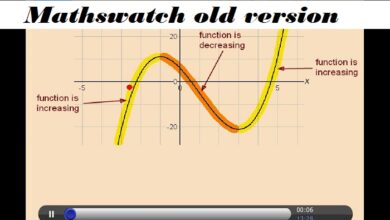OCMR: What is it and why does it matter?

OCMR stands for Open-Access Multi-Coil k-Space Dataset for Cardiovascular Magnetic Resonance Imaging. It is a publicly available dataset that contains raw k-space data from multi-coil cardiac MRI scans of healthy volunteers and patients with various heart conditions. In this blog post, we will explore what OCMR is, how it was created, what it can be used for, and what are its benefits and challenges.
What is OCMR?
OCMR is a dataset that contains k-space data from cardiac MRI scans. K-space data is the raw data that is acquired by the MRI scanner before it is reconstructed into images. Cardiac MRI scans are images of the heart and blood vessels that provide information about the structure and function of the heart.
OCMR consists of two parts: OCMR-1 and OCMR-2. OCMR-1 contains k-space data from single-slice cardiac MRI scans of 10 healthy volunteers and 10 patients with various heart conditions, such as myocardial infarction, cardiomyopathy, and congenital heart disease. OCMR-2 contains k-space data from multi-slice cardiac MRI scans of 20 healthy volunteers and 20 patients with similar heart conditions as OCMR-1.
OCMR was created by the Ohio State University and the University of Oxford as part of a collaborative project to advance the field of cardiovascular MRI.
How was OCMR created?
OCMR was created by using a multi-coil MRI scanner that has multiple receiver coils that capture the signal from different regions of the body. The scanner used for OCMR was a 3 Tesla Siemens Prisma scanner with a 32-channel cardiac coil array. The scanner was equipped with a real-time imaging platform that allows for fast and flexible data acquisition.
The data acquisition protocol for OCMR was designed to cover a wide range of cardiac MRI applications, such as cine, perfusion, late gadolinium enhancement, and flow. The protocol was also designed to be compatible with different reconstruction methods, such as parallel imaging, compressed sensing, and deep learning.
The data acquisition protocol for OCMR-1 consisted of four sequences:
- A cine sequence that captures the motion of the heart during the cardiac cycle. The sequence used a balanced steady-state free precession (bSSFP) technique with a retrospective electrocardiogram (ECG) gating. The sequence acquired one slice per heartbeat with a variable flip angle and a randomized phase encoding order. The sequence had a spatial resolution of 1.8 x 1.8 x 8 mm and a temporal resolution of 40 ms.
- A perfusion sequence that captures the blood flow in the heart muscle. The sequence used a saturation recovery spoiled gradient echo (SR-SPGR) technique with a prospective ECG triggering. The sequence acquired one slice per heartbeat with a fixed flip angle and a linear phase encoding order. The sequence had a spatial resolution of 1.8 x 1.8 x 8 mm and a temporal resolution of 100 ms. The sequence was performed before and after the injection of a contrast agent (gadobutrol).
- A late gadolinium enhancement (LGE) sequence that captures the scar tissue in the heart muscle. The sequence used an inversion recovery spoiled gradient echo (IR-SPGR) technique with a retrospective ECG gating. The sequence acquired one slice per heartbeat with a fixed flip angle and a centric phase encoding order. The sequence had a spatial resolution of 1.4 x 1.4 x 8 mm and a temporal resolution of 40 ms. The sequence was performed 10 to 15 minutes after the injection of the contrast agent.
- A flow sequence that captures the blood flow in the major vessels. The sequence used a phase contrast (PC) technique with a retrospective ECG gating. The sequence acquired one slice per heartbeat with a fixed flip angle and a linear phase encoding order. The sequence had a spatial resolution of 1.4 x 1.4 x 5 mm and a temporal resolution of 40 ms. The sequence was performed at the aortic valve, the pulmonary valve, and the mitral valve.
The data acquisition protocol for OCMR-2 consisted of three sequences:
- A cine sequence that captures the motion of the heart during the cardiac cycle. The sequence used a bSSFP technique with a retrospective ECG gating. The sequence acquired eight slices per heartbeat with a variable flip angle and a randomized phase encoding order. The sequence had a spatial resolution of 1.8 x 1.8 x 8 mm and a temporal resolution of 40 ms.
- A perfusion sequence that captures the blood flow in the heart muscle. The sequence used a SR-SPGR technique with a prospective ECG triggering. The sequence acquired three slices per heartbeat with a fixed flip angle and a linear phase encoding order. The sequence had a spatial resolution of 1.8 x 1.8 x 8 mm and a temporal resolution of 100 ms. The sequence was performed before and after the injection of a contrast agent (gadobutrol).
- A LGE sequence that captures the scar tissue in the heart muscle. The sequence used an IR-SPGR technique with a retrospective ECG gating. The sequence acquired eight slices per heartbeat with a fixed flip angle and a centric phase encoding order. The sequence had a spatial resolution of 1.4 x 1.4 x 8 mm and a temporal resolution of 40 ms. The sequence was performed 10 to 15 minutes after the injection of the contrast agent.
The k-space data from each sequence was stored in a HDF5 file with a standard format that includes the following information:
- The k-space data as a complex-valued array with dimensions of (number of coils, number of phase encodings, number of frequency encodings, number of cardiac phases, number of slices).
- The sampling mask as a binary array with the same dimensions as the k-space data that indicates which k-space locations were sampled.
- The coil sensitivity maps as a complex-valued array with dimensions of (number of coils, number of phase encodings, number of frequency encodings, number of slices) that indicate the spatial sensitivity of each coil.
- The reference images as a real-valued array with dimensions of (number of phase encodings, number of frequency encodings, number of cardiac phases, number of slices) that are reconstructed from the fully sampled k-space data using a standard method.
- The metadata as a dictionary that contains information about the subject, the sequence, the scanner, and the acquisition parameters.
What can OCMR be used for?
OCMR can be used for research and education purposes in the field of cardiovascular MRI. OCMR can be used to develop, test, and compare different reconstruction methods, such as parallel imaging, compressed sensing, and deep learning. OCMR can also be used to study and analyze the effects of different heart conditions on the k-space data and the reconstructed images.
OCMR can be accessed and downloaded from the OCMR website and the [Zenodo platform]. The OCMR website provides a user guide that explains how to use the dataset, a code repository that contains scripts and notebooks for data processing and reconstruction, and a forum that allows users to ask questions and share feedback. The Zenodo platform provides a DOI that can be used to cite the dataset in publications.
What are the benefits of OCMR?
OCMR has several benefits that make it a valuable resource for the cardiovascular MRI community. Some of the benefits are:
- OCMR is open-access and free to use for anyone who is interested in cardiovascular MRI research and education.
- OCMR is large and diverse, covering a wide range of cardiac MRI applications and heart conditions.
- OCMR is raw and multi-coil, providing the full k-space data and the coil sensitivity maps that are essential for advanced reconstruction methods.
- OCMR is standardized and well-documented, providing a consistent format and a comprehensive metadata for each file.
Conclusion
OCMR is a novel and valuable dataset that provides open-access and multi-coil k-space data from cardiac MRI scans of healthy volunteers and patients with various heart conditions. OCMR can be used for research and education purposes in the field of cardiovascular MRI, such as developing, testing, and comparing different reconstruction methods, and studying and analyzing the effects of different heart conditions on the k-space data and the reconstructed images. OCMR has several benefits, such as being large, diverse, raw, standardized, and well-documented. OCMR also has some challenges, such as being complex, noisy, and incomplete. OCMR is a collaborative project between the Ohio State University and the University of Oxford, and is hosted on the OCMR website and the Zenodo platform. OCMR aims to advance science and clinical medicine through the development, utilization, and promotion of magnetic resonance imaging and spectroscopy techniques.




